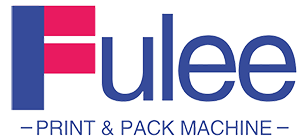Are you in the business of converting large rolls of material into smaller, more manageable rolls? If so, you’re probably familiar with the importance of a high-quality slitter-rewinder. These machines play a vital role in the production process and can precisely cut and rewind a variety of materials such as paper, film and foil.
In this comprehensive guide, we’ll delve into the world of slitter-rewinders, exploring their capabilities, benefits and how to maximize their efficiency and output.
Learn the basics of slitting and rewinding machines
Slitter-rewinders are designed to cut large rolls of material into narrow rolls of specified widths. This process, called slitting, is critical for industries such as packaging, printing and converting, where precise dimensions are critical.
The rewinding aspect of these machines involves taking freshly slit rolls and rewinding them onto individual cores, ready for further processing or distribution. This ensures that the material is neatly wound and ready for use in downstream processes.
Maximize efficiency and production
To maximize the efficiency and output of your slitter-rewinder, consider the following tips:
1. Proper Maintenance: Regular maintenance is essential to ensure your machine is running at peak performance. This includes keeping blades sharp, checking for wear, and lubricating moving parts as needed.
2. Operator Training: Proper training of machine operators is critical to efficient, safe operation. Make sure your team is well-versed in the machine’s capabilities and best practices for optimal output.
3. Quality Control: Implementing a robust quality control process is critical to ensure that the output meets the required specifications. This may involve regular inspections, measurements and adjusting machine settings as needed.
4. Material Considerations: The type of material being processed can have a significant impact on the throughput of the machine. Understanding the material’s properties, such as thickness and tensile strength, is critical to correctly setting machine parameters.
5. Automation and Technology: Investing in modern slitting and rewinding machines with advanced automation and technology can greatly increase efficiency and output. Features such as automatic tension control, laser guidance systems and digital monitoring can streamline the production process.
Advantages of high-quality slitting and rewinding machines
A high-quality slitter-rewinder offers many advantages, including:
- Precise: Precise cutting and rewinding capabilities ensure consistent high-quality output.
- Versatility: These machines can handle a variety of materials and are suitable for different industries.
- Efficiency: By automating the slitting and rewinding processes, these machines can significantly increase production efficiency.
- Cost-effectiveness: Minimizing material waste and maximizing production yields cost savings in the long run.
In summary, a well-maintained and correctly operated slitter-rewinder can be a game-changer for businesses involved in material conversion. By understanding the basics of these machines, implementing best practices, and investing in quality equipment, you can maximize efficiency and production, ultimately driving success in your industry.
Post time: Apr-12-2024



